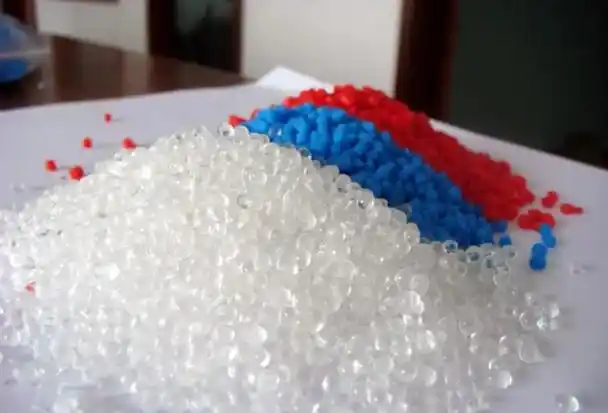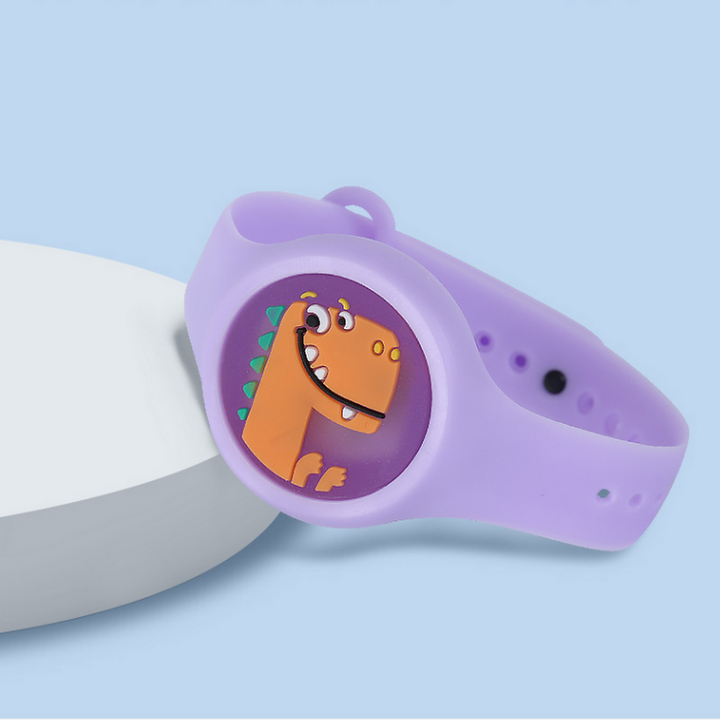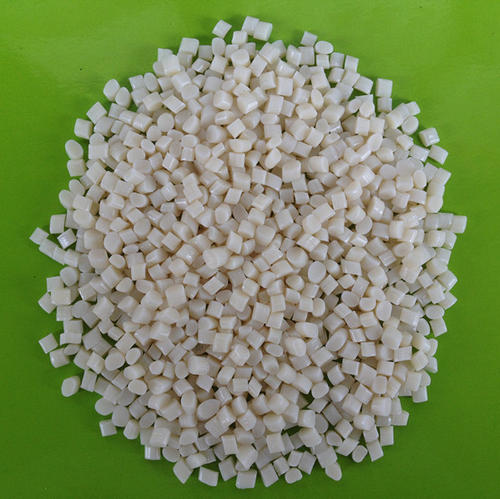As a polymer specialist who’s spent years working with manufacturers to select the right materials for their products, I’ve often encountered questions about TPR (Thermoplastic Rubber) and its properties. One common concern I hear, especially from designers and small business owners, is whether TPR is a hard and heavy material. It’s a fair question—nobody wants a product that feels like a brick or is too rigid for its intended use. Having advised on projects from footwear to consumer electronics, I’ve seen TPR used in countless ways, and its reputation for hardness or weight isn’t always accurate. In this article, I’ll dive into what TPR is, explore its hardness and weight, and share practical insights from my experience to help you decide if it’s the right material for your needs. Let’s unpack this and set the record straight.

Why the Misconception About TPR’s Hardness and Weight?
The idea that TPR is very hard and heavy often comes from seeing it in specific products, like shoe soles or tool grips, where it might feel denser or firmer than expected. In my work, I’ve noticed clients sometimes confuse TPR with rigid plastics or assume all rubber-like materials are heavy. But TPR is a thermoplastic elastomer (TPE), designed to be flexible and lightweight in most cases, though its properties can vary widely. To clear up this misconception, I’ll explain TPR’s characteristics, compare it to other materials, and provide real-world examples to show how its hardness and weight can be tailored to your project.
What Is TPR?
TPR, or Thermoplastic Rubber, is a versatile material that blends the elasticity of rubber with the processability of plastics. I’ve recommended it for numerous applications due to its balance of performance and cost. Here’s a quick rundown:
Composition: TPR is typically made from styrene-butadiene-styrene (SBS) or styrene-ethylene-butylene-styrene (SEBS), mixed with additives like oils, fillers, or stabilizers to adjust its properties.
Properties: TPR is generally soft, flexible, and resilient, with a rubber-like feel. Its hardness ranges from very soft (Shore A 20) to moderately firm (Shore A 90), and it’s lightweight compared to metals or rigid plastics. It has moderate heat resistance (softens above 80-100°C) and limited chemical resistance.
Processing: As a thermoplastic, TPR can be injection-molded, extruded, or blow-molded without curing, making it cost-effective and recyclable.
Applications: I’ve seen TPR in shoe soles, tool handles, toys, phone cases, and seals due to its flexibility, grippy texture, and low cost.
For example, I once helped a startup use TPR for a line of ergonomic pens, where its soft grip and light weight made writing more comfortable without adding bulk.
Is TPR Very Hard?
The short answer is no, TPR is not inherently very hard. Its hardness is highly customizable, which is one of its biggest strengths. Here’s what I’ve observed in my work:
Hardness Range: TPR’s hardness is measured on the Shore A scale, typically from 20A (like a soft gel) to 90A (firm but still rubbery). For context:
Soft TPR (20A–30A) feels like a squishy eraser, used in grips or medical tubing.
Medium TPR (30A–60A) is flexible, common in shoe soles or phone cases.
Firm TPR (60A–90A) feels stiffer, used in durable soles or structural parts. Unlike hard plastics (e.g., ABS, Shore D 70+), even the firmest TPR retains elasticity.
Why It Might Seem Hard: In some applications, like heavy-duty shoe soles, manufacturers use harder TPR grades (e.g., 80A) or add fillers to increase stiffness, which can feel rigid. I’ve seen clients mistake this for TPR being a “hard” material overall, when it’s just a specific formulation.
Customization: You can tailor TPR’s hardness by adjusting its base polymer and SBS or SEBS) or additives. For instance, I worked on a client’s yoga mat where we chose a medium-soft TPR (40A) for a cushioned feel, proving TPR can be far from hard.
In a project for a tool manufacturer, we used a firm TPR (70A) for hammer grips, which felt sturdy support but was still flexible enough to absorb shock, showing TPR’s versatility in hardness.

Is TPR Material Heavy?
TPR is generally not heavy—it’s one of the lighter polymer options available. Here’s why, based on my experience:
Density: TPR’s density is around 0.910–0.2 g/cm³, depending on the formulation. This is:
Lighter than metals like aluminum (2.7 g/cm³) or steel (7.8 g/cm³).
Similar to other flexible materials like polyurethane (PU) (1.0–1.2 g/cm³) or silicone (1.1–1.3 g/cm³).
Heavier than very light materials like EVA foam (0.2–0.5 g/cm³), used in ultra-light shoes. A typical TPR shoe sole weighs 150–300 grams, compared to 400–600 g for rubber soles.
Why It Might Seem Heavy: In some cases, TPR feels heavier because of:
Thicker designs: A bulky TPR sole adds weight, even if the material is light**.
Fillers: Adding calcium carbonate or other fillers to reduce cost or increase stiffness can slightly increase density.
Application: In large components, like industrial grips, the volume of TPR can make it seem heavy.
Lightweight Options: SEBS-based TPR with low-density fillers or foaming agents can be optimized for reduce weight. I helped a sports gear company use foamed TPR for lightweight shoe soles, cutting weight by 10–15% while maintaining durability.
In a project for a wearable fitness tracker, we chose TPR for its lightweight and soft feel, ensuring the device didn’t weigh down users’ wrists, proving TPR is far from heavy in most cases.

Factors Affecting TPR’s Hardness and Weight
From my experience, several factors influence whether TPR feels hard or heavy:
Formulation:
SBS-based TPR is softer and lighter, while SEBS-based TPR is slightly firmer and more durable.
Additives** like oils reduce hardness, while fillers or fillers increase stiffness and density.
Hardness Grade:
Choosing a Shore A hardness** (e.g., 30A vs. 80A) directly affects perceived rigidity. I’ve specified soft TPR for grippy bands and firm TPR for structural parts.
Design:
Thin, hollow TPR parts are light and flexible, while thick, solid parts feel heavier and stiffer.
Foaming reduces weight without sacrificing strength.
Processing:
Over-molding or coating can add weight or make TPR feel harder.
Injection molding allows precise lightweight designs.
Application Environment:
In cold conditions, TPR may feel slightly harder due to reduced flexibility.
In bulky applications, TPR’s weight can accumulate.
In one case, a client’s TPR tool grip felt heavy because of a dense filler. We switched to a low-density SEBS-based TPR, reducing weight while maintaining a grippy feel.

Comparison Table: TPR vs. Other Materials
To put TPR’s hardness and weight in context, here’s a table comparing it to other materials I’ve worked with:
| Material | Hardness (Shore A) | Density (g/cm³) | Best Use Case |
|---|---|---|---|
| TPR | 20–90 (soft to firm) | 0.91–1.2 | Budget-friendly, flexible products |
| Polyurethane (TPU) | 60–120 | 1.0–1.5 | Durable, high-wear applications |
| Silicone | 20–80 | 1.1–1.3 | High-heat, medical-grade uses |
| EVA Foam | 15–50 | 0.2–0.5 | Ultra-light shoe soles |
Practical Applications: When to Use TPR
To decide if TPR’s hardness and weight are right for your project, here’s how I approach material selection:
Use TPR When:
You need a flexible, lightweight material for indoor or mild conditions (e.g., phone cases, grips, budget soles)..
Cost is a priority; TPR costs $2-$6/kg, much less than silicone ($10-$20/kg)).
Recyclability and fast production are important. I recommended TPR for a line of kids’ toys because it was lightweight and easy to mold.
You want a soft, grippy feel without excessive weight.
Choose Alternatives When:
High Hardness: For rigid parts, ABS or polycarbonate are better than firm TPR.
Ultra-Lightweight: EVA foam is lighter for cushioned soles or padding.
Heavy-Duty Use: Polyurethane (TPU) offers tougher, more wear-resistant options for sports gear.
High Heat: Silicone withstands 200°C+, unlike TPR.
In a project for a camping gear company, we used soft TPR for tent peg grips, keeping them light and comfortable. For a hiking boot sole, we chose TPU for better durability, as TPR felt too soft under heavy loads.

My Experience: Debunking TPR Myths
A while back, I worked with a small business making TPR phone accessories. They were concerned that TPR would make their cases feel heavy and hard, based on a competitor’s product. After reviewing their design, I found the competitor used a high-density, firm TPR (80A) with heavy fillers. We opted for a low-density, medium-soft TPR (40A) with foaming agents, resulting in lightweight, grippy cases that customers loved. In another case, a sports equipment client wanted TPR for dumbbell grips, but we switched to silicone for a softer, lighter feel under sweaty conditions. These projects taught me that TPR’s hardness and weight are highly customizable, but misconceptions can lead to poor choices.
How to Optimize TPR for Hardness and Weight
Based on my work, here’s how to ensure TPR meets your hardness and weight needs:
Specify Hardness:
Work with suppliers to choose a Shore A grade (e.g., 30A for soft grips, 70A for durable soles).
Test samples to confirm the feel matches your product’s needs.
Minimize Weight:
Use SEBS-based TPR with low-density fillers or foaming agents for lighter parts.
Design thin or hollow structures to reduce material volume.
Avoid Over-Filling:
Limit dense fillers (e.g., calcium carbonate) to keep TPR light and flexible.
Balance cost savings with performance.
Test in Context:
Prototype TPR parts and test them under real-world conditions (e.g., weight-bearing, temperature).
I always run drop tests or compression tests to ensure durability.
Consult Suppliers:
Request material data sheets for density and hardness specs.
Collaborate on custom formulations for your specific application.
In a wearable tech project, we used foamed TPR (30A) for a lightweight band, ensuring comfort without hardness or bulk.

Maintenance Tips for TPR Products
To keep TPR products light and flexible, follow these tips from my experience:
Avoid Heat: Store TPR away from radiators or sunlight to prevent softening, which can make it feel heavier or less firm.
Clean Gently: Use a damp cloth with mild soap; avoid solvents that can degrade TPR and affect its texture.
Check Wear: Inspect for cracks or hardening, especially in high-use products like soles.
Limit Load: Don’t overload TPR parts (e.g., overstretch bands) to maintain shape and lightness.
A Personal Story: Turning a Heavy Mistake into a Win
Last year, I consulted for a company making TPR water bottle grips. They were frustrated because early prototypes felt heavy and stiff, leading customers to think TPR was a poor choice. After reviewing their formulation, I found they used a high-density TPR (85A) with excess fillers to cut costs. We switched to a low-density, medium-soft TPR (50A) with foaming agents, reducing weight by 20% and improving comfort. The new grips were a hit, and the company thanked me for debunking their TPR misconceptions. This experience showed how TPR can be light and soft with the right approach.
Conclusion: TPR Is Neither Very Hard Nor Heavy
In summary, TPR is a flexible, lightweight material that’s not very hard or heavy in most applications. Its hardness can range from soft (20A) to firm (90A), and its density (0.9–1.2 g/cm³) makes it lighter than many alternatives. By choosing the right formulation, design, and processing, you can tailor TPR to be soft, grippy, and light for products like grips, soles, or cases. If ultra-light or rigid materials are needed, alternatives like EVA or TPU may be better. With the insights I’ve shared, you can confidently use TPR where it shines. If you’re wondering if TPR fits your project, drop your details in the comments, and I’ll help you find the perfect solution!

Related Q&A
Q1: Can TPR be made softer and lighter?
A: Yes, use SEBS-based TPR with low Shore A hardness (e.g., 20–30A) and foaming agents to reduce density and weight.
Q2: Is TPR heavier than silicone?
A: TPR (0.9–1.2 g/cm³) is slightly lighter than silicone (1.1–1.3 g/cm³), but design and fillers can affect perceived weight.
Q3: Why does my TPR product feel hard?
A: It may use a firm TPR grade (e.g., 80A) or dense fillers. Check the formulation and consider softer grades for a flexible feel.
Q4: Is TPR safe despite its hardness or weight?
A: TPR is safe for consumer goods if properly formulated. For food or medical uses, ensure it’s FDA-compliant.





